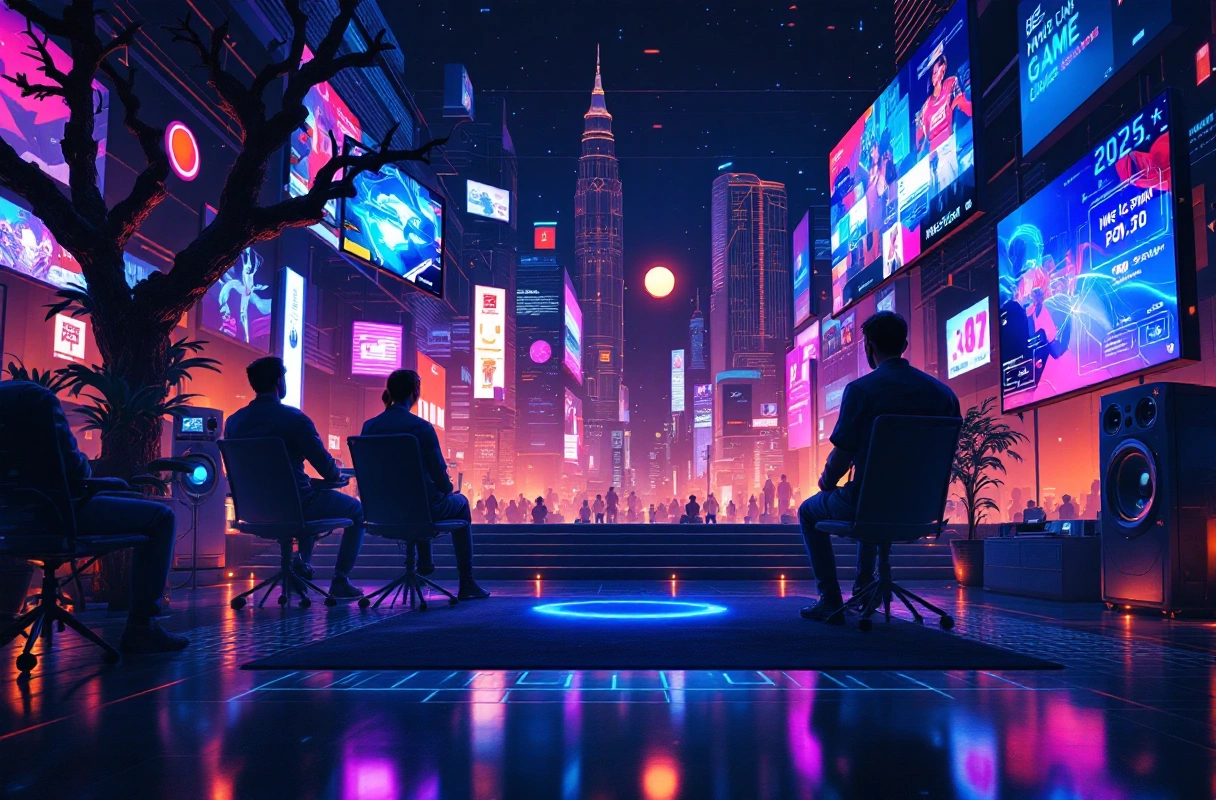

The landscape of interactive entertainment is experiencing rapid transformation, particularly through innovations in web3 gaming and entertainment. As we advance into 2025, the fusion of blockchain technologies, decentralized gaming, and immersive experiences will redefine how users engage with digital content. This article examines the key trends, technologies, and expectations for the future of interactive entertainment, highlighting the pivotal role of web3 technologies, metaverse gaming, and play-to-earn models.

Web3 gaming and entertainment signify a paradigm shift in how digital interactions occur, driven by decentralized networks and blockchain technology. This shift empowers users, allowing them to own, trade, and monetize their in-game assets, fundamentally altering the relationship between players and game developers. The decentralized model fosters a more equitable ecosystem where players have a stake in the games they play.
Blockchain technology serves as the backbone of web3 gaming and entertainment, providing transparency, security, and ownership verification. Smart contracts facilitate seamless transactions, enabling users to trade assets without intermediaries. This is particularly significant in the gaming world, where players can own unique in-game items as NFTs (non-fungible tokens), enhancing their gaming experience.
NFT gaming has gained traction as a method for players to truly own their in-game achievements. Unlike traditional games where assets are locked within the game, NFTs enable players to buy, sell, and trade their digital collectibles across various platforms. This shift not only increases player engagement but also introduces new revenue streams for developers.

The future of interactive entertainment will be marked by several key trends that leverage emerging technologies and user preferences. Understanding these trends will be essential for developers and investors looking to capitalize on the evolving landscape.
The play-to-earn model has revolutionized the gaming industry, allowing players to earn real-world value through gameplay. This model incentivizes participation and rewards engagement, creating a more compelling user experience.
Virtual reality (VR) gaming is set to become more immersive and accessible. Advances in VR technology will enhance user experiences, allowing players to engage with virtual worlds in unprecedented ways.
The rise of decentralized gaming communities is reshaping how players interact with each other and with developers. These communities enable collaboration and shared ownership of projects, fostering a sense of belonging and investment.

The concept of the metaverse represents a collective virtual space where users can interact with each other and digital environments. It is an expansive ecosystem that integrates various elements of gaming, social interaction, and commerce.
In 2025, the metaverse will play a crucial role in shaping interactive entertainment. Games will serve as gateways to larger metaverse experiences, allowing players to transition seamlessly between games and social environments.
Decentralized gaming platforms will emerge as alternatives to traditional gaming networks. These platforms will prioritize user control and ownership, fostering a more equitable gaming environment.
While the future of web3 gaming and entertainment is promising, it also presents unique challenges that stakeholders must address. Understanding these challenges is essential for navigating the evolving landscape effectively.
As blockchain technologies gain traction, regulatory frameworks will need to evolve to address issues such as taxation, intellectual property rights, and consumer protection. Developers and investors must stay informed about regulatory changes in their regions.
The integration of blockchain technology into gaming requires significant technical expertise. Developers must overcome hurdles related to scalability, interoperability, and user experience.
The volatility of cryptocurrencies can pose risks for both players and developers. Fluctuations in asset values may impact the appeal of play-to-earn models and NFT investments.
As the industry evolves, several misconceptions persist that can hinder understanding and adoption. Addressing these misconceptions is vital for fostering a more informed community.
Many believe that web3 gaming and entertainment is exclusive to those already involved in cryptocurrency. In reality, the appeal of ownership, rewards, and community engagement can attract a diverse audience, including casual gamers.
While skepticism surrounds NFTs, they represent a fundamental shift in how ownership and value are perceived in digital environments. The ongoing integration of NFTs into various sectors indicates their potential for long-term relevance.
The complexity of blockchain technology is often overstated. As user-friendly interfaces and educational resources become more prevalent, mainstream adoption will likely accelerate.
The convergence of web3 gaming, blockchain, and immersive technologies like the metaverse signals a new era for interactive entertainment. As we move into 2025, these innovations will redefine digital engagement, empowering creators, investors, and communities to shape experiences that are more dynamic, participatory, and rewarding than ever before. For those willing to adapt early, the opportunities are as vast as the digital worlds being built.
At Outer Edge, we’re committed to being more than observers—we’re active participants in shaping this future. Through gatherings that unite pioneers, media that amplifies visionary voices, and communities that push the boundaries of gaming and entertainment, we help innovators explore and seize what’s next. Join us at the edge, where the future of interactive entertainment comes to life.
Join more than 40k+ investors, dreamers, builders & experts in getting exclusive weekly content and access to the top 1% of Web3, Blockchain, and AI globally!